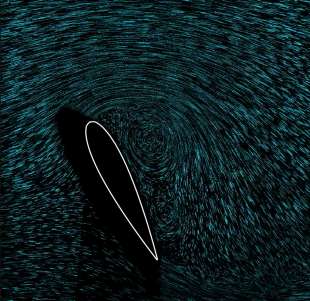Our research aims to understand the dynamics and the role of large fluid vortices in the force generation mechanism. For example, we investigated how porosity can control the vortical structures downstream of a disk orthogonal to the stream (Cummins et al., 2017). This is an example of how fundamental fluid mechanics curiosity can underpin the discovery of key new physical phenomena, such as the separated vortex ring that underlies the extraordinary flight of the dandelion seed (Cummins et al., 2018). This research underpinned the €2M ERC Consolidator Grant 2020 project, where we investigate whether the separated vortex ring can be exploited to enable a step increase in the endurance of insect-scale drones.
We investigated when the formation of leading-edge vortices results in the breakdown of linear theories. In Otomo et al., (2021), co-authored with colleagues at EPFL and Glasgow, we provide a new criterion for the validity of Theodorsen’s theory, which is a paradigm theory of unsteady aerodynamics. In Smith et al. (2021), we investigate the vortex, known as the leading-edge separation bubble, that forms at the sharp edge of bluff bodies such as buildings and at the leading edge of sharp wings. Our work resulted in a new low-order model to predict the bubble length.
Flagship Project
Find out more about our flagship project funded by the European Research Council,
Dandidrone: A Dandelion-Inspired Drone for Swarm Sensing.



